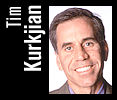 |
| Thursday, June 12 Updated: June 15, 8:57 AM ET No-hitters come in all kinds of ways, shapes, forms By Tim Kurkjian ESPN The Magazine |
|||||||||||||
|
No-hitters make no sense. Bud Smith has thrown a no-hitter, and Roger Clemens hasn't? Tommy Greene did, Steve Carlton didn't. Charlie Lea did, Greg Maddux hasn't. Mike Warren has more no-hitters than the Padres. Juan Nieves has more than the Mets. And six Astros pitchers -- in one game -- have taken part in as many no-hitters as Tom Seaver and Jim Palmer.
It's really hard to throw a no-hitter, which makes Johnny Vander Meer's back-to-back no-hitters in 1938 so remarkable. In the 12 seasons before his double dip, there were a total of two no-hitters in the National League. From 1916 through 1943, the only year in which two no-hitters were thrown in the NL was the year of Vander Meer's double no-hitter. But if it's so hard, how could the White Sox's Joe Cowley throw one? His came in 1986. He walked seven in a 7-1 win over the Angels. "He was so bad,'' Doug Rader, then a White Sox coach, said half-jokingly years later, "I didn't even shake his hand after the game.'' How could Bobo Holloman throw one? He was a bad relief pitcher on his way to the minor leagues, but before being sent down, the St. Louis Browns gave him his first major-league start on May 6, 1953. He threw a no-hitter. They couldn't send him to the minor leagues after that, so he stuck around, won two more games in his career, never threw another complete game and finished with an ERA of 5.21. The 1953 season was his only one in the major leagues. If it's so hard to throw a no-hitter, how could it happen on consecutive days? On Sept. 17, 1968, the Giants' Gaylord Perry no-hit the Cardinals. On Sept. 18, the Cardinals' Ray Washburn no-hit the Giants. In 1990, there were seven no-hitters. A no-hitter happens when great stuff intersects with good luck. Or, good stuff with great luck. And you only have to be great for a few hours, which explains how some truly ordinary pitchers have accomplished one extraordinary feat. Great defense also helps. In Nieves' no-hitter in 1987, the final out came on a diving catch by center fielder Robin Yount on a drive by Eddie Murray. A forgiving official scorer also helps. Three pitchers in history recorded no-hitters when the official scorer changed a hit to an error after the game: Jeff Tesreau in 1912, Ernie Koob in 1917 and Virgil Trucks in 1952. There have been 211 nine-inning no-hitters in history, seven by the incomparable Nolan Ryan, who threw his last one at age 44. Bob Feller pitched a no-hitter on Opening Day of the 1940 season, providing the answer to this conundrum: How it is possible for every hitter on a team to finish a game with the exact batting average as when they started? With all the great pitchers in Mets history, it's hard to believe that no Met has thrown a no-hitter. Pat Zachry came close, and it's just as well he didn't get it. The story, originally told to Marty Noble of Newsday, goes this way. In 1982, Zachry had a no-hitter going with two outs in the eighth inning. He then gave up a hit to Bob Molinaro. After the game, Zachry told Noble that he thought the eighth inning was actually the ninth inning. So, if he had gotten the last out of the eighth without giving up a hit, he would have leaped in the air, and perhaps into the arms of his catcher -- one inning early. How embarrassing would that have been? In his book, "The Man Who Stole First Base," Craig Wright details a strange no-hitter. In 1923, Boston's Howard Ehmke threw a no-hitter against the Philadelphia A's. With two outs in the sixth, A's pitcher Slim Harris, an .060 hitter, doubled to left-center, but he missed first base. The Red Sox appealed, and Harris was called out at first -- nullifying the hit. In Ehmke's next start, four days later at Yankee Stadium, he gave up a hit to the leadoff man, Whitey Witt, in the first inning. It was a highly questionable call, and everyone in the ballpark just assumed it was an error. But in 1923, the scoreboard gave only the run total, and there was no public address system. When Ehmke got the final out in the ninth inning, the 15,000 fans cheered wildly, thinking that Ehmke had become the first man in history to throw back-to-back no-hitters. As it turned out, it was only a one-hitter. Fifteen years later, Vander Meer did it for real. And that time, everyone knew it. Tim Kurkjian is a senior writer for ESPN The Magazine and a regular contributor to Baseball Tonight. E-mail tim.kurkjian@espnmag.com. |
| ||||||||||||



